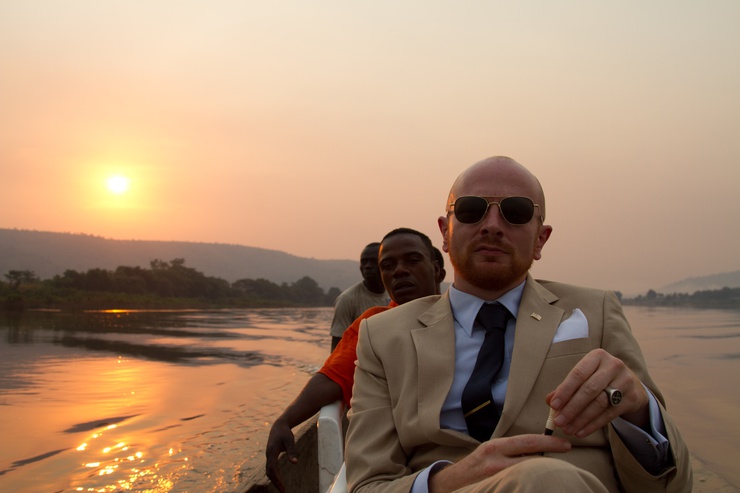
International Documentary Film Festival: Amsterdam cinema’s leading lady
Published on
Translation by:
Tom GaleIn Amsterdam, there are coffee shops, bicycles, Rembrandt and a port. But between the paintings and the pedals lies the IDFA, the largest documentary film event in the world and one of the biggest festivals in the world you’ve probably never heard of
Amongst a northern clock tower that strikes every quarter of an hour, interwoven canals and barges, young tourists come to taste the delicacies of the famous coffee shops, while the older generations arrive in their droves for Rembrandt. These are the lovers of Amsterdam, where the city dances to the rhythm of 24 frames per second at the end of November. Since 1988, the centre of the Dutch capital has been the host of the international documentary film festival Amsterdam (IDFA), the biggest of its kind in the world. It’s a sprawling event which stretches over roughly ten days in this dolls house of a city where designer shop windows are hidden by a flock of bicycles. On this year’s menu are 340 film and transmedia project releases in almost twenty categories, nine of which are competition categories. From New York production companies to Australian television, with distributors, consultants and directors in-between, the whole world is represented here.
Between budget cuts and scraping the barrel
My press pass opens up an Aladdin’s cave of obscure screenings and other key areas of the festival. After taking a few seconds to compose myself, I begin the journey towards my new cinematographic existence, catalogue and programme in hand. Dedicating a whole day to the shortlists simply will not do. The person next to me is obviously in the same position. This Italian photographer and director, a loyal supporter of the IDFA, maintains that using the programme ‘leaves much to chance’. He’s not wrong: the festival is so successful (a record 200, 000 tickets have been sold for the 2011 event) that only early birds or those who buy their tickets online are able to see certain films.

When you see the queues forming outside the screens dedicated to the Dutch version of Cinéma du Réel, it’s hard to believe that the sector is feeling the squeeze from the financial crisis. However, the Dutch government has introduced serious budget cuts in the cultural sector. If the IDFA - which is less dependent on public funds - has been able to hold itself together, the festival’s Jan Vrijman fund for directors from developing countries might soon disappear. It’s a particularly surprising decision given that the Dutch are known to have documentary film making in their blood. My host Inger seems to confirm my hypothesis. She has been to see many films throughout the festival out of interest in a particular subject or out of sheer curiosity. She recognises that she barely goes to watch any documentaries at the cinema outside of the festival. ‘Darling, would you like to watch a documentary tonight?’ hardly rolls off the tongue. Unless...
Docu-fiction
Those that still believe that the documentary is just the plaything of the wasteful art film industry need only to take a walk around the festival. Documentary film making has moved closer and closer to narrative styles that are traditionally more at home with fiction (character choices, cinematographic techniques), something noted by the head of the festival orchestra, Ally Derks and American documentary film maker Steve James. This is without mentioning the emergence of the web documentary/ transmedia genre which is well represented at the festival.
However we haven’t come to Amsterdam to lecture festival goers but to push them to the heart of an intimate reality. The silver screen reflects a world beyond the immediacy of 3D and TV news. Films at the IDFA cover a range of topics including the death penalty (Into The Abyss, the latest Werner Herzog film), Paraguayan ‘campesinos’ (rural peasants) fighting against GM crops (Raising Awareness), Russian teenage super models in Japan (Girl Model), the ‘excesses’ of progress (Surviving Progress), female boxing in Afghanistan (The Boxing Girls Of Kabul), Israeli settlements in Palestine (5 Broken Cameras) and much, much more. The IDFA is also home to touching portrayals such as that of Young-Chan, a deaf and mute Korean (Planet of Snail) and other little gems. In The Ambassador, Mads Brügger, with a hidden camera and diplomatic passport in hand, takes us on an astounding road trip to the heart of high level corruption in the Central African Republic. To make the cocktail even more cathartic, Q&A sessions follow (fairly) systematically.
Further down the road come the hard negotiations. At Docs For Sale, the IDFA transforms into a huge documentary market. The festival is also a melting pot of talent (IDFA academy), a lab for transmedia experimentation (Docs Lab) and a pitching area (Forum), where directors can meet and pitch to distributors. Most importantly, it’s a vast meeting space. At the Brasserie Schiller tonight, the real appendix of the festival, it’s the turn of the Franco-German channel Arte to treat the crowd. The place is full to the brim. My Flemish neighbour, a young assistant producer, mentions the flourishing documentary market in Flanders and the ‘central pitch’ that we are both scheduled to make, he with his exhibiting film Little Heaven and myself with my Detroit documentary. No matter what the coming storm, this clan of documentary makers will face it down together.
Images: main and in-text © IFDA ©Hélène Bienvenu/ videos Into the Abyss (cc) MakingOf; Girl Model (cc) abudhabifilmfestival/ both via youtube
Translated from Festival international du documentaire : quand Amsterdam le pion au ciné



